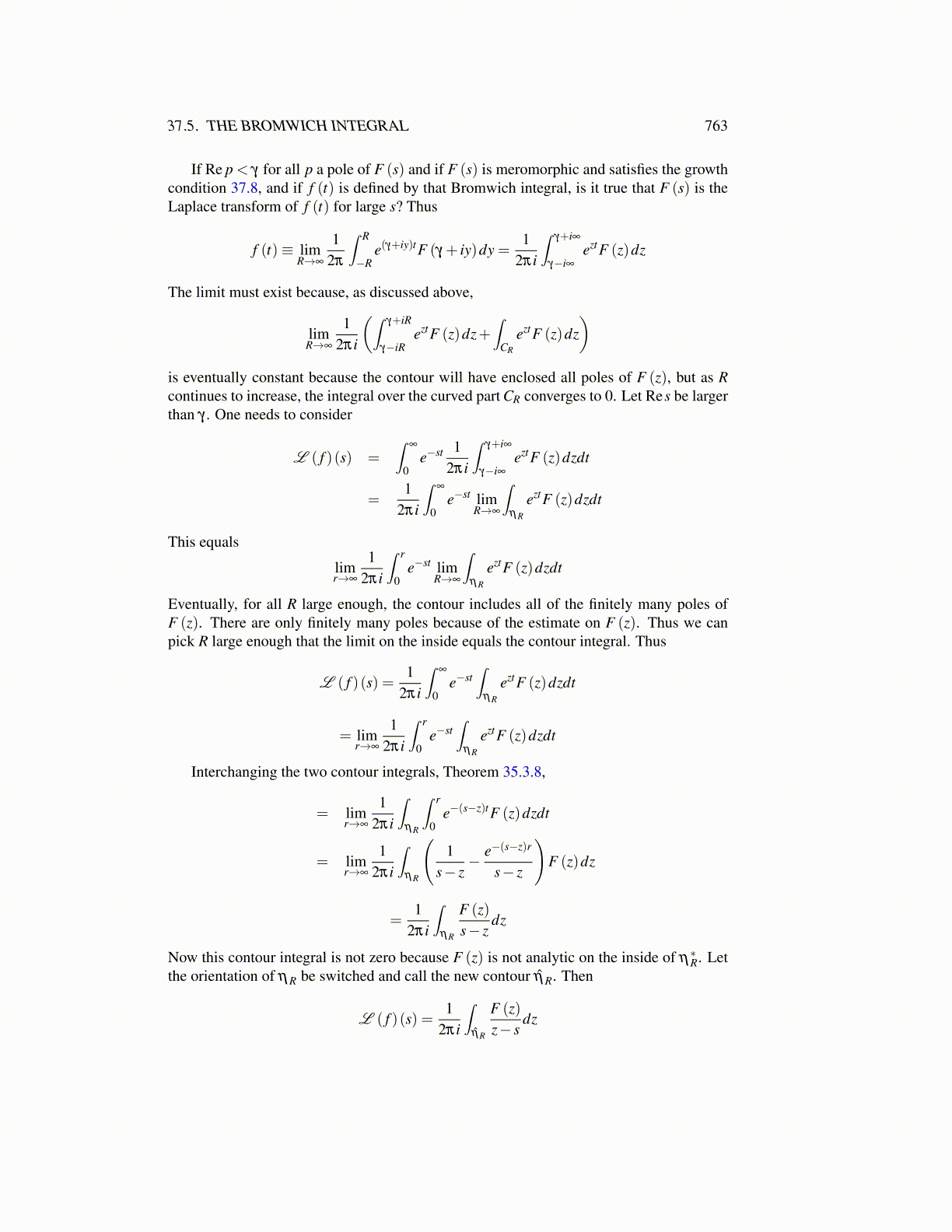
37.5. THE BROMWICH INTEGRAL 763
If Re p < γ for all p a pole of F (s) and if F (s) is meromorphic and satisfies the growthcondition 37.8, and if f (t) is defined by that Bromwich integral, is it true that F (s) is theLaplace transform of f (t) for large s? Thus
f (t)≡ limR→∞
12π
∫ R
−Re(γ+iy)tF (γ + iy)dy =
12πi
∫γ+i∞
γ−i∞eztF (z)dz
The limit must exist because, as discussed above,
limR→∞
12πi
(∫γ+iR
γ−iReztF (z)dz+
∫CR
eztF (z)dz)
is eventually constant because the contour will have enclosed all poles of F (z), but as Rcontinues to increase, the integral over the curved part CR converges to 0. Let Res be largerthan γ . One needs to consider
L ( f )(s) =∫
∞
0e−st 1
2πi
∫γ+i∞
γ−i∞eztF (z)dzdt
=1
2πi
∫∞
0e−st lim
R→∞
∫ηR
eztF (z)dzdt
This equals
limr→∞
12πi
∫ r
0e−st lim
R→∞
∫ηR
eztF (z)dzdt
Eventually, for all R large enough, the contour includes all of the finitely many poles ofF (z). There are only finitely many poles because of the estimate on F (z). Thus we canpick R large enough that the limit on the inside equals the contour integral. Thus
L ( f )(s) =1
2πi
∫∞
0e−st
∫ηR
eztF (z)dzdt
= limr→∞
12πi
∫ r
0e−st
∫ηR
eztF (z)dzdt
Interchanging the two contour integrals, Theorem 35.3.8,
= limr→∞
12πi
∫ηR
∫ r
0e−(s−z)tF (z)dzdt
= limr→∞
12πi
∫ηR
(1
s− z− e−(s−z)r
s− z
)F (z)dz
=1
2πi
∫ηR
F (z)s− z
dz
Now this contour integral is not zero because F (z) is not analytic on the inside of η∗R. Letthe orientation of ηR be switched and call the new contour η̂R. Then
L ( f )(s) =1
2πi
∫η̂R
F (z)z− s
dz